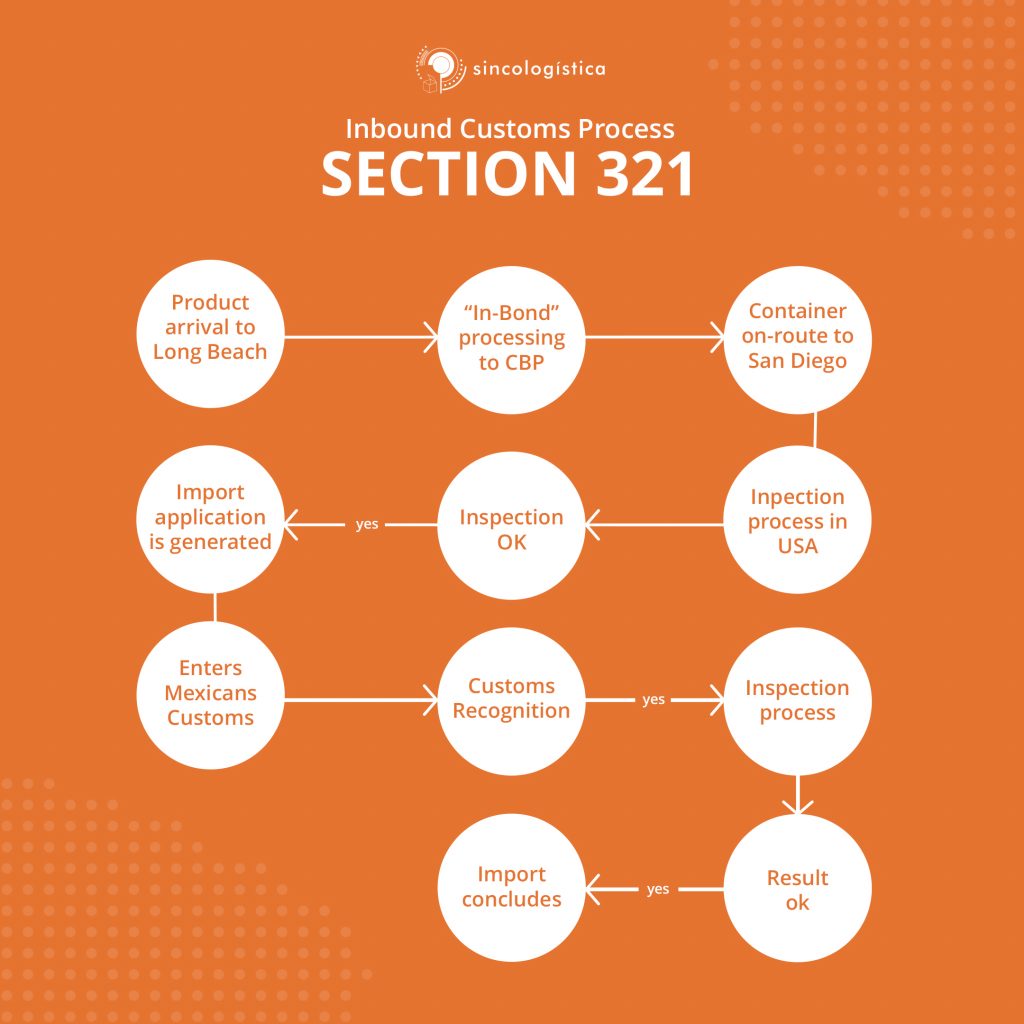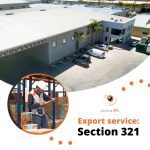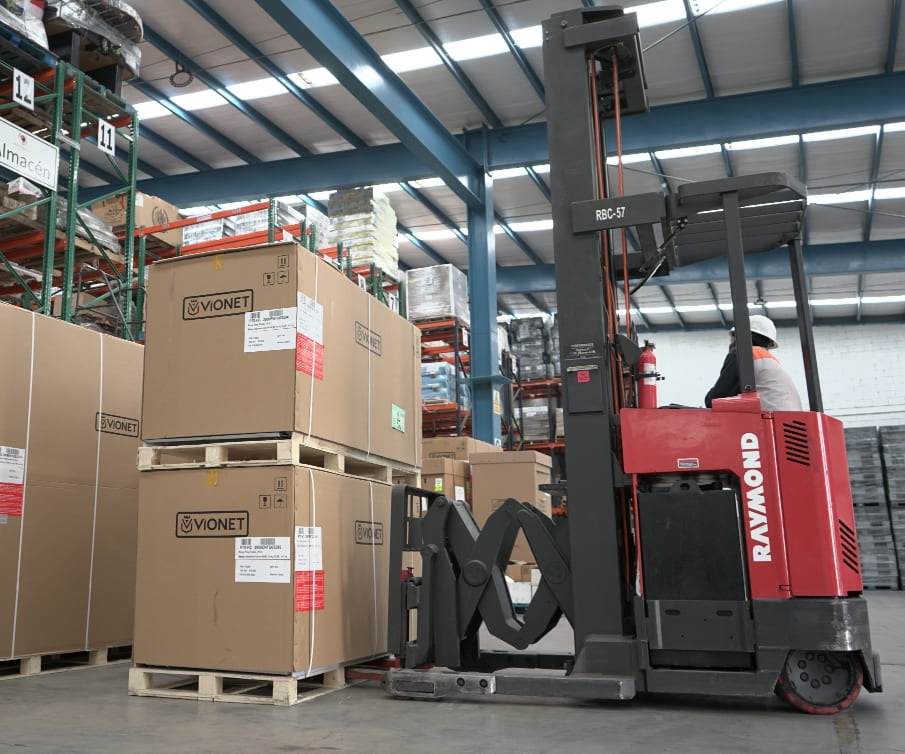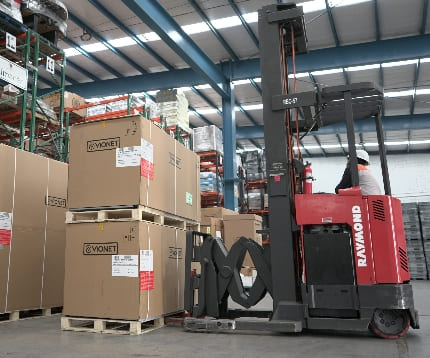Why is the Inbound process crucial?
The Inbound process is crucial in international logistics, allowing goods to move through the United States without immediate duty payments. This enables businesses to manage their supply chains more efficiently and cost-effectively.
This article will explain the Inbound process, how it works, and how Sinco 3PL can help businesses optimize their cross-border operations.
Key Factors and Tips for Managing the Inbound Process
Successfully managing the Inbound process requires a clear understanding of U.S. customs regulations, logistics coordination, and compliance protocols. For businesses involved in cross-border trade, ensuring that goods move efficiently and legally through the United States is essential to maintaining a smooth supply chain.
By leveraging the right strategies, companies can minimize delays, reduce costs, and streamline their import/export operations. Below, we explore the key factors and actionable tips for optimizing the Inbound process and ensuring seamless logistics management.
What Is the Inbound Process?
The Inbound process is a U.S. Customs and Border Protection (CBP) program that allows goods to transit through the country without paying duties immediately. Meet the key features of the Inbound Process:
✅ Deferred Duties: Import duties are postponed until the goods reach their final destination.
✅ Controlled Transit: Goods are transported under a bond agreement, ensuring customs compliance.
✅ Supply Chain Flexibility: Ideal for shipments from the U.S. to another country or stored Inbounded warehouses.
Types of Inbound Process Movements
The Inbound Process System is designed to facilitate the movement of goods through the United States without immediate duty payments, ensuring greater flexibility for international trade. This system enables businesses to temporarily store, inspect, or transport goods through the U.S. while complying with U.S. Customs and Border Protection (CBP) regulations.
There are three primary movement types within the Inbound Process, each serving a distinct logistical function. Understanding these movements allows companies to choose the best option based on their supply chain requirements, final destination, and customs obligations. The following sections summarize each movement type and its practical applications.
H4: Immediate Transportation (IT)
The Immediate Transportation (IT) movement is a crucial component of the Inbound process. It allows goods to be transported from their arrival port to another U.S. location without requiring immediate duty payment. This process enables businesses to move shipments efficiently while keeping them under U.S. Customs and Border Protection (CBP) control.
This method is particularly beneficial when shipments require inspection, repackaging, or consolidation before reaching their final destination. By leveraging the Inbound process through Immediate Transportation, companies can optimize their supply chain, reduce customs delays, and improve overall logistics efficiency.
H4: Transportation and Exportation (T&E)
The Transportation and Exportation (T&E) movement is a key aspect of the Inbound process, allowing goods to transit through the United States for final export to another country. This process ensures that shipments can move efficiently across borders without being subject to immediate duty payments in the U.S.
This movement is particularly useful in Mexico-U.S.-Canada trade routes, where the U.S. acts as a transit hub for goods moving between countries. By utilizing the T&E process, businesses can streamline cross-border logistics, optimize supply chain efficiency, and reduce customs-related delays.
H4: Immediate Exportation (IE)
The Immediate Exportation (IE) movement is a critical component of the Inbound process, allowing goods to be exported directly from the U.S. arrival port without entering the domestic market. This ensures that shipments remain under U.S. Customs and Border Protection (CBP) control while being efficiently redirected to their final destination.
This movement is particularly beneficial for goods that need to be re-exported upon arrival, without undergoing additional processing or duty payments in the U.S. By leveraging the IE process, businesses can minimize storage time, reduce logistics costs, and maintain a streamlined Inbound process for international shipments.
The Inbound Process Step by Step
The Inbound process is a structured logistics system that ensures goods move efficiently through the United States while remaining compliant with U.S. Customs and Border Protection (CBP) regulations. This process allows businesses to transport, inspect, and export shipments without immediate duty payments, optimizing supply chain operations.
By following a step-by-step approach, companies can streamline customs procedures, minimize delays, and ensure seamless cross-border logistics. The following sections outline each stage of the Inbound process, from initial submission to final destination or export.
Step 1: Submitting the Inbound Request
🔹 The process starts with submitting an electronic request via the Automated Commercial Environment (ACE) system.
🔹 Information required:
✅ Shipment type (IT, T&E, IE).
✅ Destination details.
✅ Carrier and tracking information.
Step 2: Customs Approval
🔹 U.S. Customs and Border Protection (CBP) reviews and approves the request.
🔹 Approval ensures compliance with transit regulations.
Step 3: Secure Transit
🔹 Goods move under bond, meaning they remain under CBP control.
Step 4: Arrival and Inspection
🔹 Shipments may be inspected upon arrival to verify compliance.
Step 5: Final Destination or Export
🔹 Goods are exported or released into the U.S. market with duties paid.
Benefits of the Inbound Process
The Inbound process offers several advantages for businesses engaged in international trade and logistics:
✅ Cost Savings: Deferring duties helps companies improve cash flow.
✅ Operational Efficiency: Reduces customs complexity, allowing for inspection, consolidation, and reexportation.
✅ Regulatory Compliance: Ensures shipments follow CBP regulations, avoiding delays or fines.
✅ Greater Flexibility: Supports supply chain strategies, such as temporary storage and transshipment.
How Sinco 3PL Simplifies the Inbound Process
At Sinco 3PL, we streamline and optimize cross-border logistics, ensuring smooth Inbound processing for businesses.
Expert Document Management
🔹 Our logistics team handles all paperwork to ensure compliance and avoid penalties.
Seamless Coordination
🔹 We oversee the entire process, from submitting ACE applications to coordinating customs inspections and transit logistics.
Advanced Tracking Technology
🔹 Our real-time tracking system provides visibility at every step.
🔹 Clients receive instant updates on shipment status and estimated arrival times.
Strategic Locations for Faster Transit
🔹 Based in Tijuana, Baja California, near major U.S. ports, ensuring fast and cost-effective logistics solutions.
But we also work in other locations such as Yucatan, Oaxaca and Quintana Roo.
All niches and industries can work with us but mainly:
Enhancing Your Inbound Process with Sinco 3PL
📞 The Inbound process offers significant cost-saving and operational advantages for companies engaged in international trade. However, navigating customs procedures requires expertise and precision.
At Sinco 3PL, we specialize in making cross-border logistics simple and efficient.
My WhatsApp for you:













